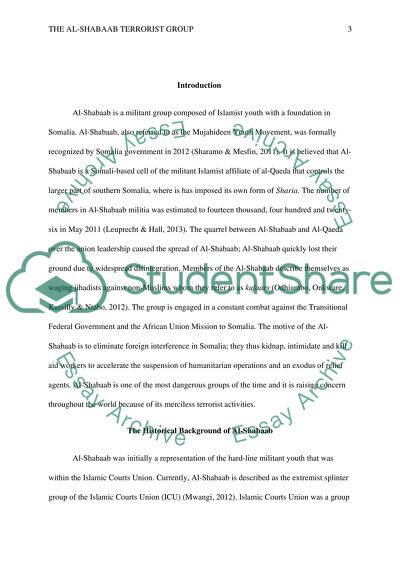Cite this document
(“The Al-Shabaab Terrorist Group Research Paper Example | Topics and Well Written Essays - 2750 words”, n.d.)
Retrieved from https://studentshare.org/military/1623790-the-al-shabaab-terrorist-group
Retrieved from https://studentshare.org/military/1623790-the-al-shabaab-terrorist-group
(The Al-Shabaab Terrorist Group Research Paper Example | Topics and Well Written Essays - 2750 Words)
https://studentshare.org/military/1623790-the-al-shabaab-terrorist-group.
https://studentshare.org/military/1623790-the-al-shabaab-terrorist-group.
“The Al-Shabaab Terrorist Group Research Paper Example | Topics and Well Written Essays - 2750 Words”, n.d. https://studentshare.org/military/1623790-the-al-shabaab-terrorist-group.


